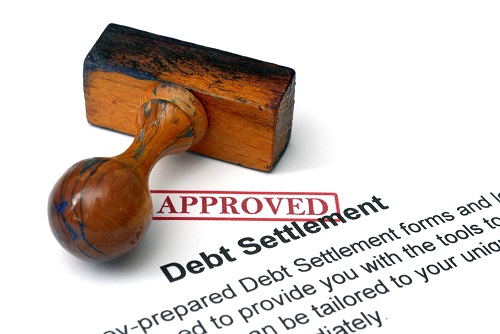Dealing with debt can be an overwhelming experience, especially when harassment from creditors exacerbates the situation. Fortunately, various government and non-profit programs offer debt relief to help individuals regain financial stability and reduce creditor harassment. This article explores some of the key programs available, highlighting their benefits and how they operate.
Government Debt Relief Programs
- Federal Student Loan Forgiveness Programs:
Public Service Loan Forgiveness (PSLF): Designed for borrowers employed in public service jobs, PSLF offers forgiveness of remaining Direct Loan balances after 120 qualifying monthly payments. Eligible jobs include positions in government organizations, non-profits, and other public service roles.
Teacher Loan Forgiveness: This program offers forgiveness of up to $17,500 in Direct or FFEL Subsidized and Unsubsidized Loans for teachers who work in low-income schools for five consecutive years.
Income-Driven Repayment Plans: These plans adjust monthly payments based on income and family size, with remaining loan balances forgiven after 20-25 years of qualifying payments. Plans include Income-Based Repayment (IBR), Pay As You Earn (PAYE), and Revised Pay As You Earn (REPAYE).
- Bankruptcy Protection:
Chapter 7 Bankruptcy: This form of bankruptcy allows for the discharge of most unsecured debts, such as credit card debt and medical bills, providing a fresh start for individuals struggling with overwhelming debt. The process involves liquidating non-exempt assets to repay creditors.
Chapter 13 Bankruptcy: Unlike Chapter 7, Chapter 13 involves a repayment plan over three to five years, allowing individuals to keep their property while making affordable payments to creditors. This plan is ideal for those with a regular income who can commit to a structured repayment schedule.
Non-Profit Debt Relief Programs
Credit Counseling Agencies:
Non-profit credit counseling agencies offer free or low-cost services to help individuals manage their debt. These agencies provide budgeting assistance, financial education, and debt management plans (DMPs).
Debt Management Plans (DMPs): Through a DMP, credit counselors negotiate with creditors to lower interest rates and monthly payments. Individuals make a single monthly payment to the counseling agency, which then distributes the funds to creditors. This can significantly reduce harassment from creditors.
Debt Settlement Programs
Non-profit organizations sometimes offer debt settlement services, negotiating with creditors to accept a lump-sum payment that is less than the full amount owed. While this can reduce overall debt, it can negatively impact credit scores and may involve tax implications.
Non-Profit Legal Aid
Legal aid organizations provide free legal assistance to low-income individuals facing debt-related issues. These services can include representation in court, negotiation with creditors, and advice on debt collection laws and bankruptcy.
Fair Debt Collection Practices Act (FDCPA): Legal aid attorneys can help enforce protections under the FDCPA, which prohibits debt collectors from engaging in harassment, including threats, repeated phone calls, and misleading statements.
Benefits of Government and Non-Profit Debt Relief Programs:
Reduced Harassment from Creditors
Enrolling in a debt relief program often results in reduced or eliminated creditor harassment. Creditors are more likely to cooperate when they see a structured plan in place for repayment.
Legal protections, such as those provided by the FDCPA, further shield individuals from aggressive collection practices.
Improved Financial Management
Programs offered by credit counseling agencies and other non-profits often include financial education components, helping individuals improve their budgeting and money management skills.
Income-driven repayment plans and other structured repayment options help individuals maintain regular payments, reducing the likelihood of default and further financial trouble.
Long-Term Debt Relief:
Programs like PSLF and bankruptcy can provide significant long-term debt relief, allowing individuals to rebuild their financial lives without the burden of unmanageable debt.
Debt management plans and settlements can lower the total amount of debt owed and provide a clear path to becoming debt-free.
How to Access These Programs:
- Research and Eligibility:
- Begin by researching available programs and determining eligibility criteria. Government websites, non-profit organizations, and credit counselling agencies are valuable resources for information.
- For federal student loan forgiveness programs, visit the official Federal Student Aid website. For bankruptcy, consult with a bankruptcy attorney or legal aid organization.
- Consult with Professionals:
- Speak with credit counsellors, financial advisors, or attorneys to understand the best options for your specific situation. Many non-profits offer free initial consultations.
- Avoid for-profit debt relief companies that charge high fees and may not have your best interests at heart.
- Create a Plan:
- Once you have identified the appropriate program, work with professionals to create a detailed plan for managing and reducing your debt.
- Stay committed to the plan and regularly review your progress to ensure you are on track to achieve your financial goals.
Conclusion:
Debt relief is attainable through various government and non-profit programs, each offering unique benefits tailored to different financial situations. By taking advantage of these resources, individuals can reduce creditor harassment, improve their financial management skills, and ultimately achieve long-term debt relief. It is crucial to research, seek professional advice, and commit to a structured plan to successfully navigate the journey to financial freedom.
Get in touch with us today at www.Settleloan.in and embark on your path to financial freedom


